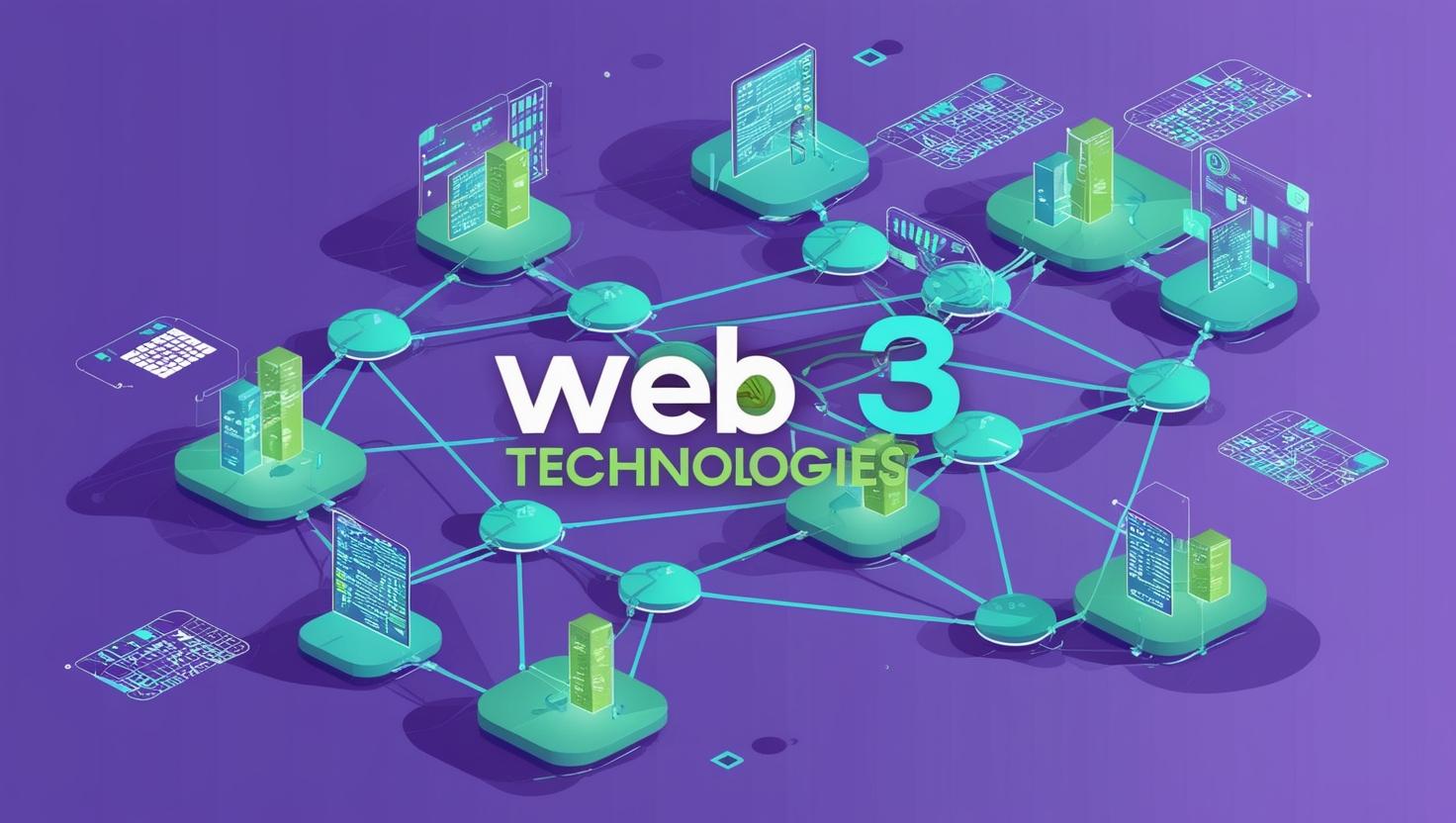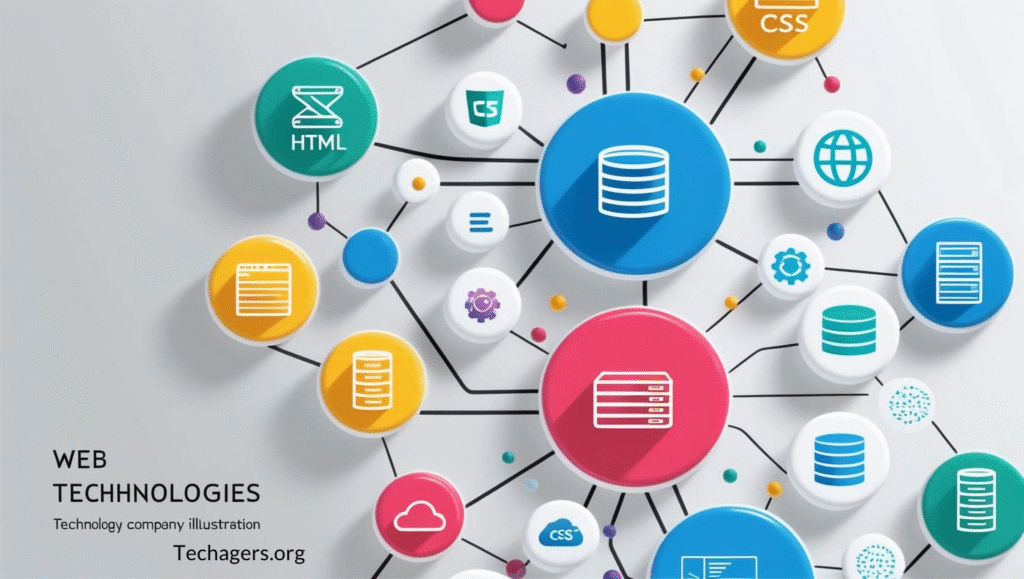
I. Introduction to Web Technologies
A. Definition and Overview
What is Web3? Web3 represents the third and most recent iteration of the internet, intended to be a more decentralized, user-centric approach. It emphasizes individual ownership of data, powered by blockchain technology, which allows interactions to be verified without traditional intermediaries.

The evolution from Web1 to Web2 to Web3 has been a fascinating journey:
- Web1 was largely static and read-only, with information primarily flowing in a one-directional manner from publishers to users.
- Web2 introduced interactivity and user-generated content, allowing users to not only consume but also create and share content. However, this centralized power led to issues related to privacy and control.
- Web3 aims to resolve these concerns by decentralizing power back to the users and enabling them to control their own data.
Key differences between Web2 and Web3 include:
- User data is owned by individuals rather than corporations.
- Web3 applications are typically built on blockchain, enabling trustless interactions.
- The architecture of Web3 promotes transparent governance and community involvement.
B. Historical Context
The emergence of blockchain technology was truly a game-changer, originating from Bitcoin’s launch in 2009. This technology provided the backbone of decentralized systems, enabling trust between parties without needing a central authority.
With this foundation, decentralized applications (dApps) began developing, offering a range of services independent of traditional central servers.
The role of cryptocurrencies in Web3 is vital, as they not only facilitate transactions on decentralized platforms but also serve as a means of incentivizing participant engagement and contributing to a growing digital economy.
C. Importance of Web3
Web3 is crucial for several reasons:
- Enhancing user privacy and control: Users can interact with applications without sacrificing personal information to corporations.
- Promoting decentralization: Distributing power leads to fairer and more balanced systems.
- Expanding economic opportunities: Web3 offers new avenues for creators and developers to monetize their work and engage directly with their audiences.
II. Key Technologies Behind Web3
A. Blockchain Technology
How blockchain works: At its core, blockchain is a distributed ledger technology that records transactions across many computers. This ensures that the record cannot easily be altered, promoting trust and reducing fraud.
Types of blockchains include:
- Public blockchains: Open to anyone, allowing for transparency and wide participation (e.g., Bitcoin, Ethereum).
- Private blockchains: Restrict access to authorized users, offering more control and privacy.
Scalability and security considerations are ongoing discussions in blockchain development. Solutions are needed to handle a growing number of transactions while keeping the network secure.
B. Decentralized Finance (DeFi)
What is DeFi? DeFi refers to a new financial ecosystem operating without traditional banks or intermediaries. It enables users to lend, borrow, and trade assets directly with one another.
Differences between traditional finance and DeFi include:
- Greater accessibility for users globally.
- Lower fees due to the absence of intermediaries.
- Transparency of operations, which enhances trust.
The role of smart contracts in DeFi cannot be overlooked; they automate processes and enforce agreements without human intervention, minimizing the risk of error and fraud.
C. Non-Fungible Tokens (NFTs)
Understanding NFTs: Unlike cryptocurrencies like Bitcoin, NFTs are unique digital assets often used to represent ownership of digital art, music, and other media.
The impact of NFTs on digital ownership is profound, allowing creators to tokenize their work and sell it directly to consumers.
The integration of NFTs is visible in various industries, like art and gaming, where they revolutionize ownership and engagement, leading to new revenue streams and community building.
III. Applications of Web3 Technologies
A. Decentralized Applications (dApps)
Definition and examples of dApps: dApps are applications that run on a blockchain rather than a centralized server. Some popular examples include Uniswap for trading and Cryptokitties for gaming.
How dApps differ from traditional applications: They are often open-source and rely on community governance. This stands in contrast to traditional apps, which are usually controlled by single entities.
Challenges in developing and using dApps can include a steeper learning curve and issues related to user experience and accessibility.
B. Decentralized Autonomous Organizations (DAOs)
What are DAOs? DAOs are organizations run by smart contracts and governed by community votes rather than a central authority.
Governance and structure of DAOs often involve token holders casting votes on proposals, emphasizing community input and collective decision-making.
Case studies of successful DAOs highlight their potential, such as MolochDAO, which funds Ethereum development through member contributions.
C. Web3 Social Media Platforms
The rise of decentralized social networks is garnering attention as alternatives to traditional platforms like Facebook and Twitter.
Benefits of user control in social media are immense; users can own their data and have a say in platform governance.
Comparing traditional and Web3 social platforms reveals significant contrasts in how content is shared, moderated, and monetized, emphasizing user empowerment.
IV. Challenges and Criticisms of Web3
A. Scalability Issues
Current limitations of blockchain technology can hinder growth, with networks struggling to process high volumes of transactions quickly and efficiently.
Solutions being explored include Layer 2 solutions, which aim to increase throughput while reducing congestion on the main blockchain.
The balance between decentralization and scalability remains a pivotal issue as developers seek to enhance both.
B. Regulatory Concerns
An overview of the regulatory landscape reveals a patchwork of approaches across different countries, with many grappling to find a balance between fostering innovation and ensuring investor protection.
The implications of regulation for innovation could temper some developments, emphasizing the need for collaboration between regulators and the tech community.
Global perspectives on Web3 governance are diverse, with varying levels of support and skepticism impacting how technologies are implemented.
C. User Adoption Barriers
Understanding the average user’s perspective is crucial, as many people feel overwhelmed by the technical aspects of Web3.
Technical skills required for Web3 participation can act as barriers; simplifying interfaces and improving user education are essential steps forward.
Strategies to enhance user adoption should focus on making the technology more approachable and relatable to everyday users, bridging the gap between innovation and application.
V. The Future of Web3 Technologies
A. Potential Trends and Developments
Predictions for Web3 growth are optimistic, envisioning a future where decentralized technologies become ubiquitous.
Innovations to watch in the coming years include advancements in blockchain interoperability and the rise of user-friendly wallets that simplify transactions.
The role of AI and machine learning in Web3 could reshape how interactions are analyzed and managed, facilitating smarter and more efficient systems.
B. Impact on the Job Market
New career opportunities in Web3 are emerging, spanning roles in development, marketing, and community engagement.
The need for education and training programs is more pressing than ever as individuals look to navigate this evolving landscape.
Case studies of companies adapting to Web3 reflect a shift towards embracing decentralized models and investing in employee education.
C. Vision for a Decentralized Internet
What does a fully decentralized internet look like? It’s an inspiring thought of a space where users have complete control over their online identities and interactions.
Balancing innovation with ethical considerations is critical, ensuring that the benefits of decentralization are accessible and equitable.
The role of community involvement in shaping the future cannot be underestimated; collective input will lay the groundwork for a more inclusive online experience.
VI. Conclusion
In summary, Web3 technologies present a new horizon for the internet, emphasizing decentralization, privacy, and user empowerment.
It’s essential to adapt and explore these technologies as they continue to develop and shape our digital landscapes.
I encourage everyone to dive deeper into the world of Web3 and consider how these advancements might play a role in your life.
VII. Frequently Asked Questions (FAQs)
What is the primary purpose of Web3?
Web3 aims to create a decentralized internet that prioritizes user control, privacy, and transparent governance.
How do I get started with Web3 technologies?
Begin by exploring resources like wallets, decentralized applications (dApps), and educational platforms to understand the basics.
What are some common misconceptions about blockchain?
Many believe blockchain is only used for cryptocurrencies, when in fact, its applications extend far beyond, including supply chain tracking and voting systems.
How can Web3 benefit everyday users?
Web3 allows users to own their data, participate in decentralized platforms, and access a more equitable digital economy.
What are the risks associated with investing in Web3?
Investments in Web3 can be volatile, with potential scams and regulatory uncertainties. It’s essential to conduct thorough research before committing resources.
